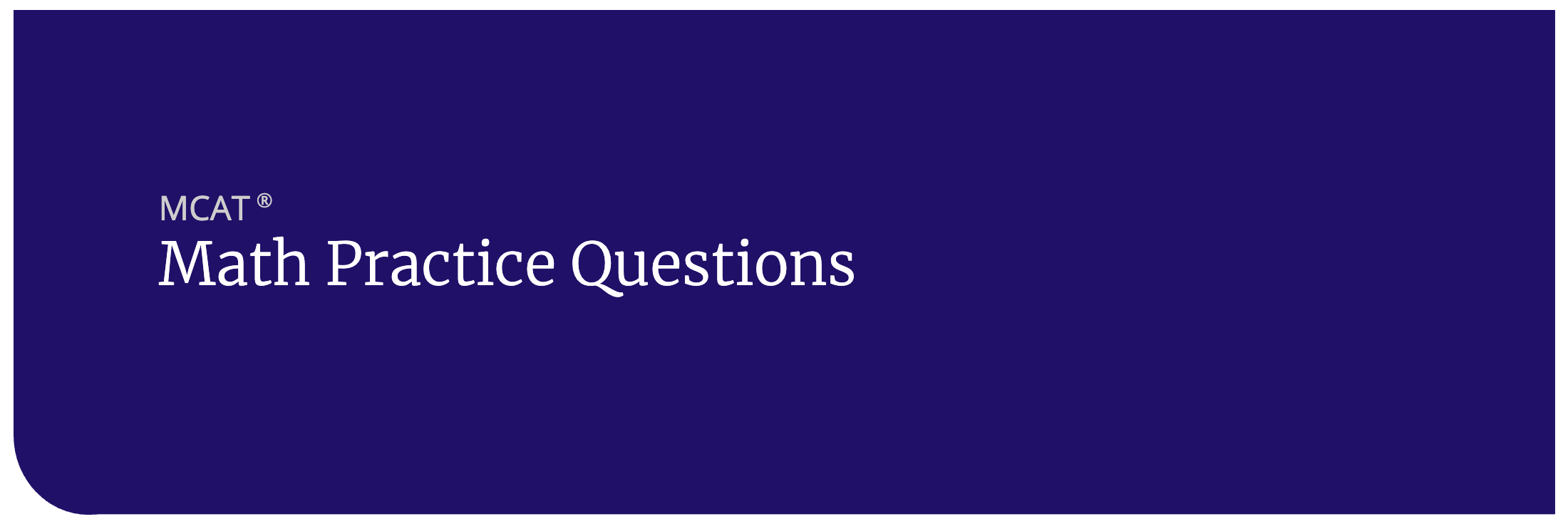MCAT Practice Questions: Math
There is no specific “Math Section” on the MCAT, but every section has the potential to ask you to perform certain calculations. While it might seem that most of the MCAT math-based questions will be in the Chemical and Physical Foundations of Biological Systems section of the test, there can be questions requiring you to perform calculations, work with statistics or manipulate experimental data in the other science sections as well. The following practice questions will help you prepare for math on the MCAT.
MCAT Math Practice Question 1
MCAT Math Practice Question #1 Explanation
The correct answer is: D
sin θ ≠ sin (90° – θ), although sin θ = cos (90° – θ). The other statements must all be true. Because sine and cosine values are always between –1 and 1, the product of sine and cosine will always have a magnitude less than 1. The sum of the absolute value of sine and the absolute value of cosine, on the other hand, will always be greater than 1. Therefore, choice (A) can be eliminated. Because sine is the ratio of opposite to hypotenuse and cosine is the ratio of adjacent to hypotenuse, the quotient between the two is the ratio of opposite to adjacent, or the tangent of the angle. Therefore, choice (B) can be eliminated. By the same logic, because sin 90° = 1 and cos 90° = 0, tan 90° is undefined, eliminating choice (C).
MCAT Math Practice Question 2
MCAT Math Practice Question #2 Explanation
The correct answer is: A
Because the error is in data transfer, the original source of data can be consulted to allow for the inclusion of the correct data point. An error in instrument calibration may introduce bias; while this should not affect the standard deviation of a sample, it would certainly affect the mean. The instrument would have to be recalibrated, and the relevant data points would have to be measured again to correct for this type of outlier, eliminating choice (B). A skewed distribution is one that has a long tail. In this case, it may be more challenging to determine if a particular value is an outlier or simply a value in the long tail of the distribution. Repeated sampling or a large sample size is usually required to determine if a sample is truly skewed, eliminating choice (C). An anomalous result is challenging to interpret, and how to correct for the result may be unclear. In some cases, the result should be inflated or weighed more heavily to reflect its significance; in other cases, it should be interpreted as a regular value. In still other cases, it is appropriate to drop the anomalous result. This decision should ideally be made before the study even begins, but this still certainly requires more consideration than simply checking a result from one’s original data set, eliminating choice (D).

